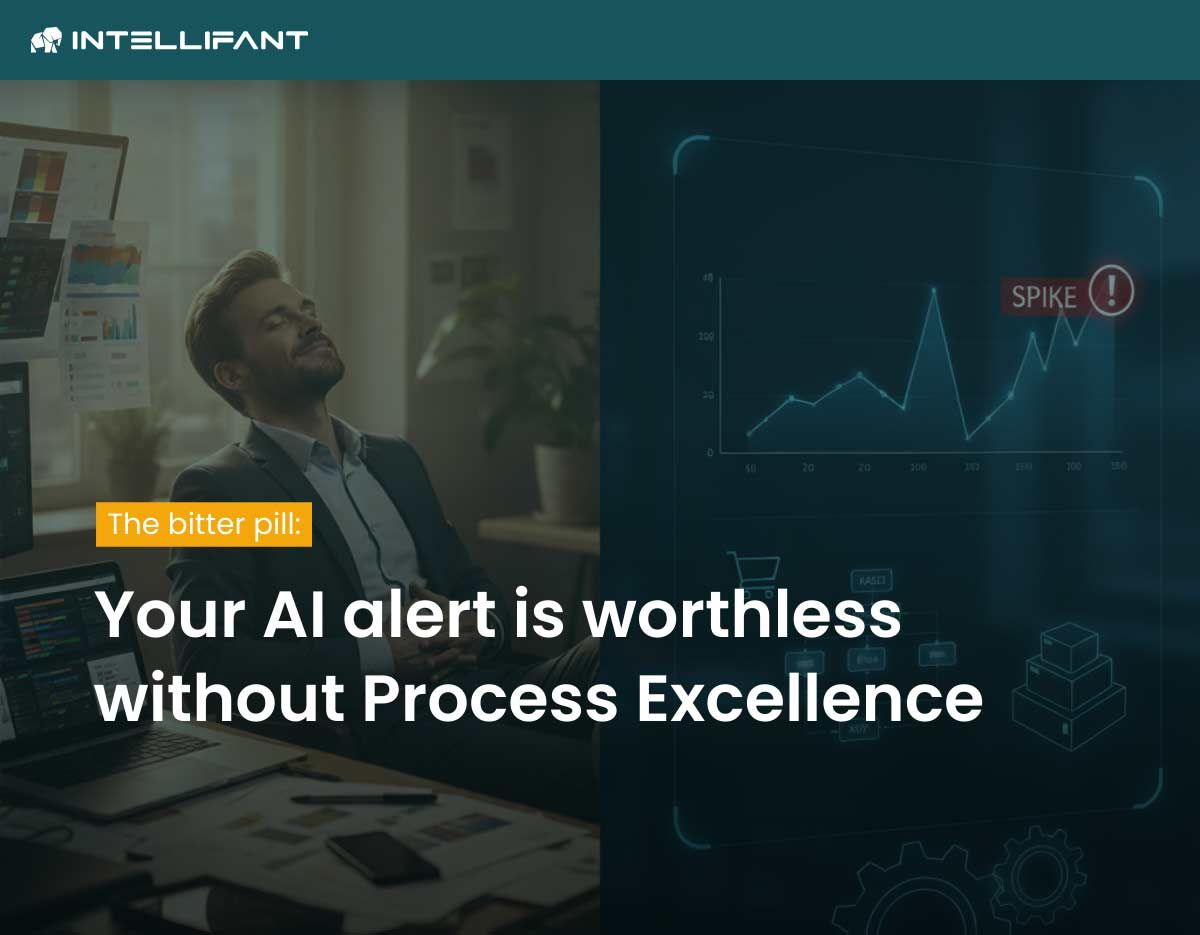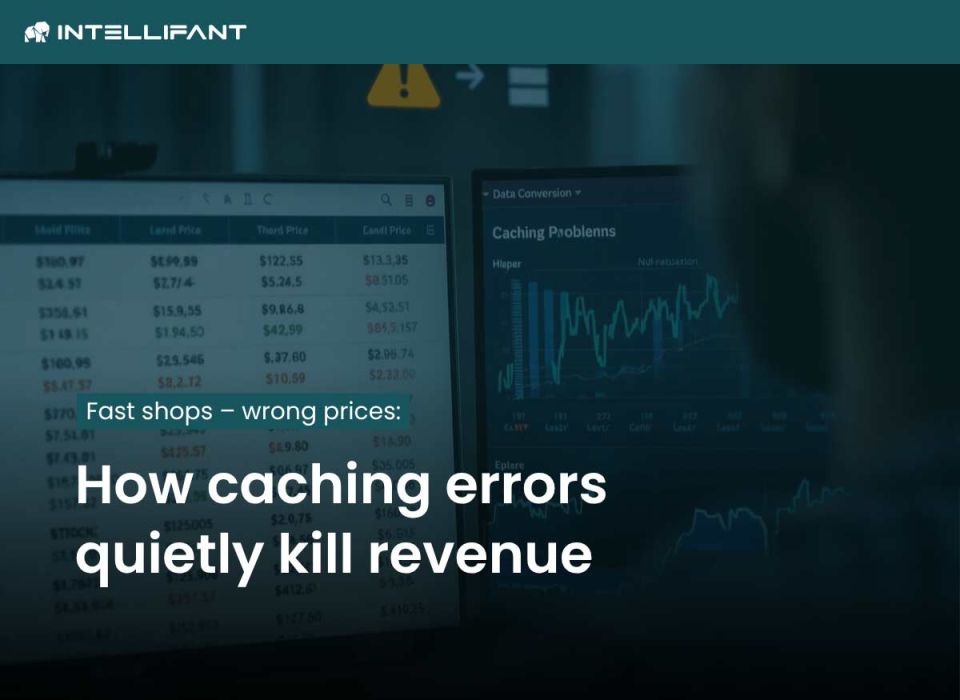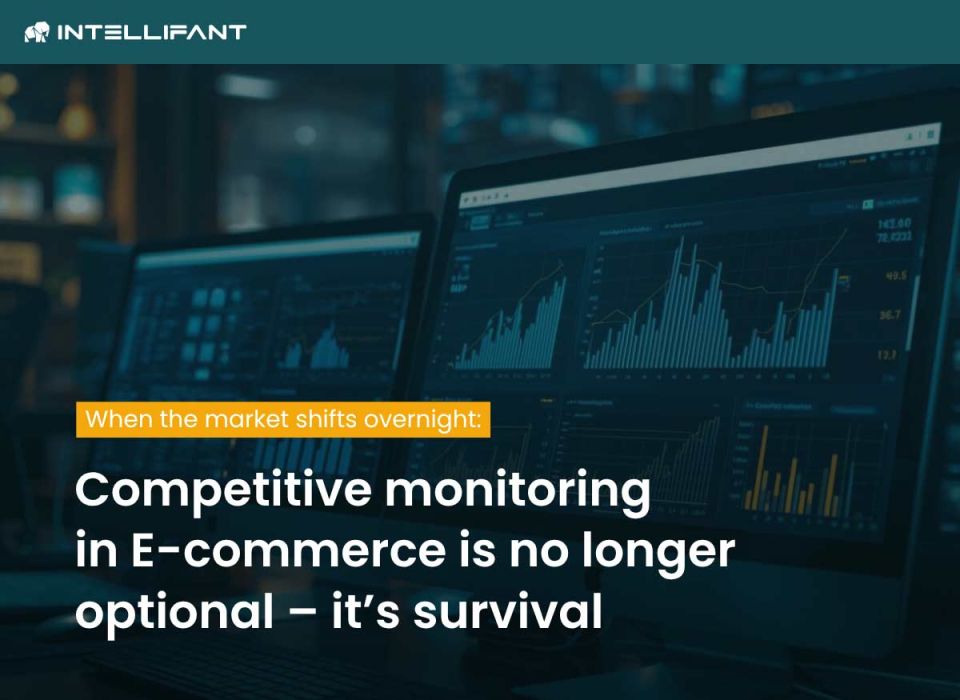Beyond gut feeling: Why anomaly detection without processes is worthless
You look at the dashboard, the numbers look good, and you rely on your gut feeling – ‘everything's fine’. This is pretty much what everyday life looks like for many e-commerce retailers.
But it is precisely in this calm that silent sales losses can hide. We like to compare this way of thinking to someone who ignores their health statistics: you feel fine, but you don't check the actual vital signs on your fitness watch.
Something similar can also happen with a pricing error (SPIKE). At the end of the day, everything looks fine.
The problem: a set item was priced incorrectly (unit price instead of set price), which led to a sharp increase in orders.
However, INTELLIFANT, as an anomaly detection system, checked the ‘vital signs’ of this online shop. Our system therefore reported two critical alarms promptly at 10 p.m. and 11 p.m.
In this case, the error was not discovered and corrected until 8:00 a.m. The consequence: around £25,000 in lost revenue.
However, earlier intervention at 6:00 a.m. would have prevented 86 per cent of the damage (approx. £21,000).
The question is: why does it take so long to respond to a critical alarm? The answer lies in the lack of process excellence after detection.
The critical moment: what needs to happen after the alarm
Anomaly detection can identify unusual or faulty processes – but even the best early warning is worthless if no one knows what to do next.
Let's imagine that the alarm comes in on Friday evening at 7 p.m. via the Shopware 6 shop: the order numbers are suddenly twice as high as expected.
Now established processes and clear answers are needed:
- Who needs to take action? (Is it the responsibility of IT or category management?)
- What needs to be done? (Is it a technical bug or a pricing error?)
- Who else needs to be informed? (Warehouse, marketing?)
Without clear responsibilities and instructions for action (e.g. within the framework of a RASCI model), it remains an alarm – and an avoidable loss. An alarm is only the impulse for root cause analysis.
Process excellence: the prerequisite for damage limitation
Process excellence (PX for short) has become a buzzword – and yet it is more important than ever!
Basically, it is about designing all business processes in such a way that they run as efficiently, effectively and smoothly as possible.
It also plays a central role in anomaly detection. PX ensures that all processes are designed efficiently and that potential disruptions can be quickly resolved.
Companies must learn from past anomalies by conducting a detailed analysis and identifying the causes of their occurrence.
Based on these findings, processes can be adapted and improved to prevent similar incidents in the future. This is the continuous improvement process (CIP) that anomaly detection makes possible.
INTELLIFANT: More than just a dashboard
Tools such as INTELLIFANT complement existing BI solutions and their classic reports with an intelligent early warning function.
However, it is important to be aware that early detection only prevents revenue losses if the downstream processes are in place.
In the case study described, an online retailer could have financed the anomaly detection software for the next 20 years with the prevented loss of approximately £21,000.
Conclusion: Only the combination counts
Anomaly detection and process excellence are inextricably linked. Online retailers who want to secure their business must not only monitor their ‘vital signs’ (order intake, conversion rate, turnover), but also have a clear plan in place for the worst-case scenario.
Because only the combination of intelligent early warning and established processes leads to proactive management and prevents real revenue losses.
#earlywarning #anomalydetection #management #technology #processimprovement #riskmanagement





